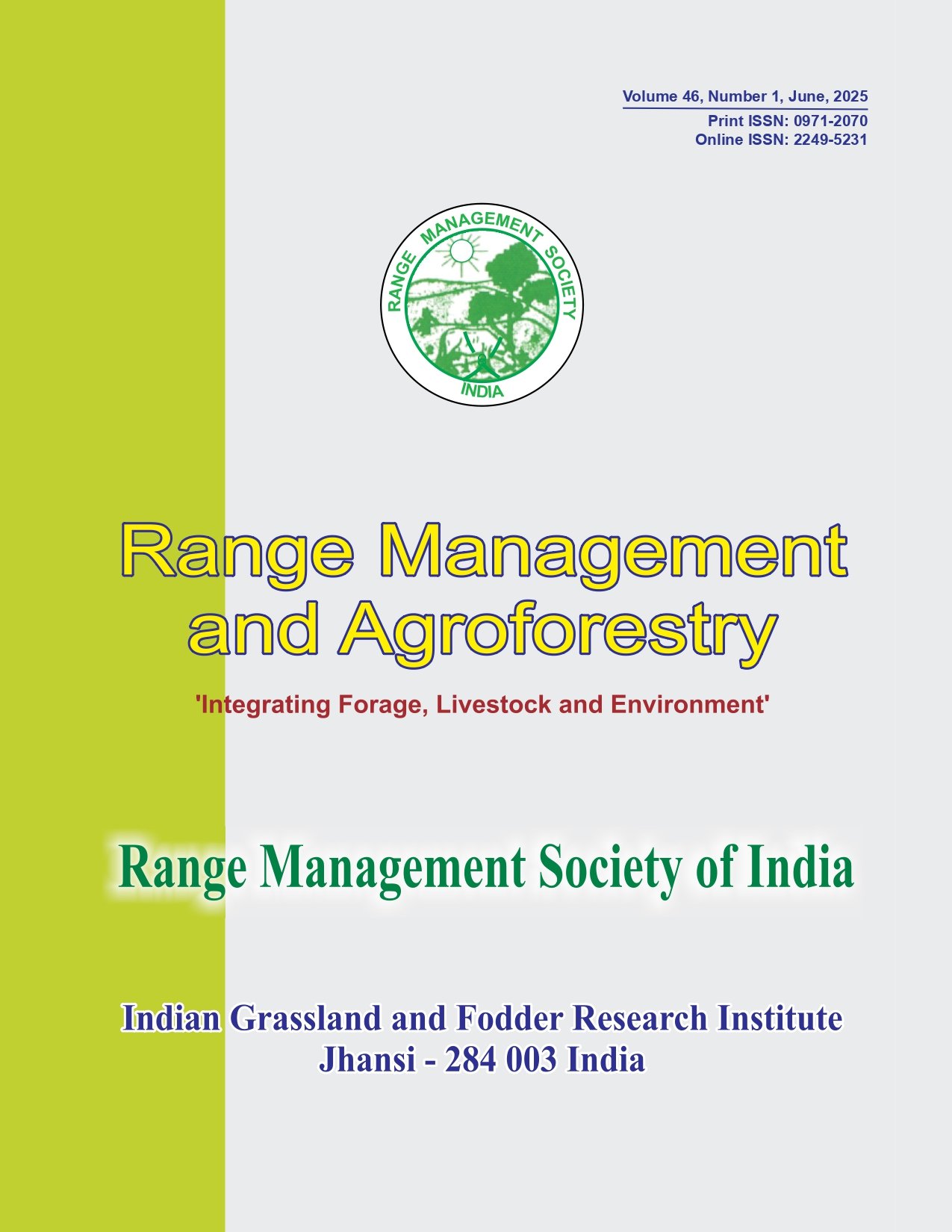Impact of chronosequence of poplar based agroforestry system on storage of soil organic carbon in active and recalcitrant pools
Abstract
The study comprised of five land uses ., sites having continuous poplar ( )-based viz Populus deltoidesagroforestry system (AFS) for 10, 20 and 30 years, fodder [pearlmillet ( )/ sorghum Pennisetum glaucum( ]-fodder [oats ( )/ berseem ( )] (F-F) rotation and fallow Sorghum bicolor) Avena sativa Trifolium alexandrinumland (control) to determine depthwise (0-15, 15-30, 30-60 and 60-90 cm) changes in total C (TC), soil inorganic C (SIC), soil organic C (SOC), total organic C (TOC) and its fractions in different land uses. The TOC pools consisting of very labile C (VLC), labile C (LC), less labile C (LLC) and recalcitrant C (RC) were determined. Fallow land had highest (1.53 Mg m ) whereas 30 years AFS had lowest bulk density (1.42 Mg m ) of the-3 -3surface soil depth. The TC, SOC and TOC stocks followed the order: AFS > F-F > FL in various soil depths. The active carbon (AC) pools (VLC + LC) were higher in 10-year plantation cycle (62.3% of TOC) than 30-year cycle (32.9% of TOC), whereas the passive carbon (PC) pools (LLC + RC) were higher in 30-year plantation cycle (67.1%) than in 10 years (37.7%) in surface depth. The contribution of LLC to PC was higher in 30-year plantation cycle (65%) than in 10-year plantation cycle (48%). Therefore, long-term adoption of poplar based agroforestry system plays a significant role in sequestration of resistant carbon pools in the soils.




